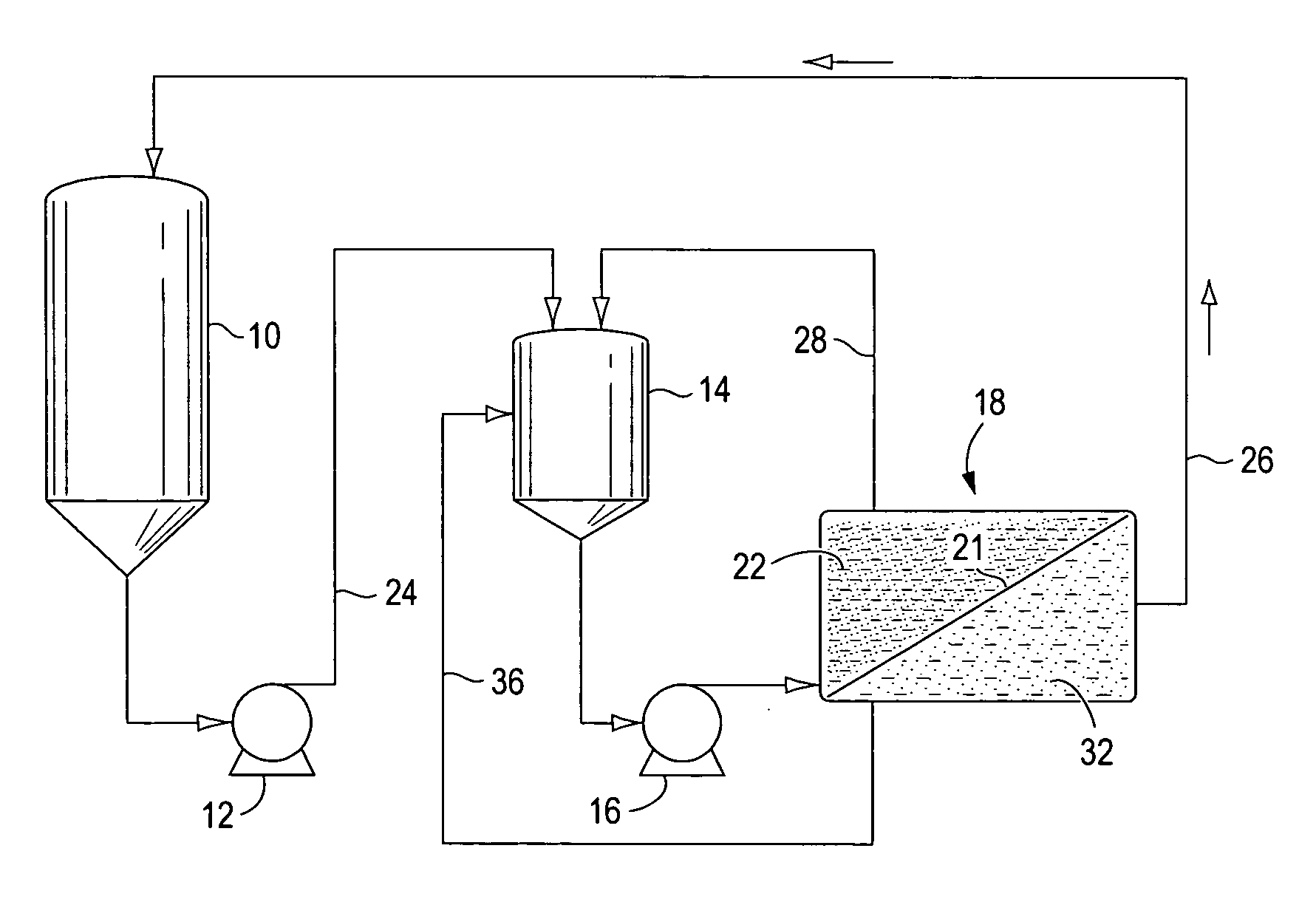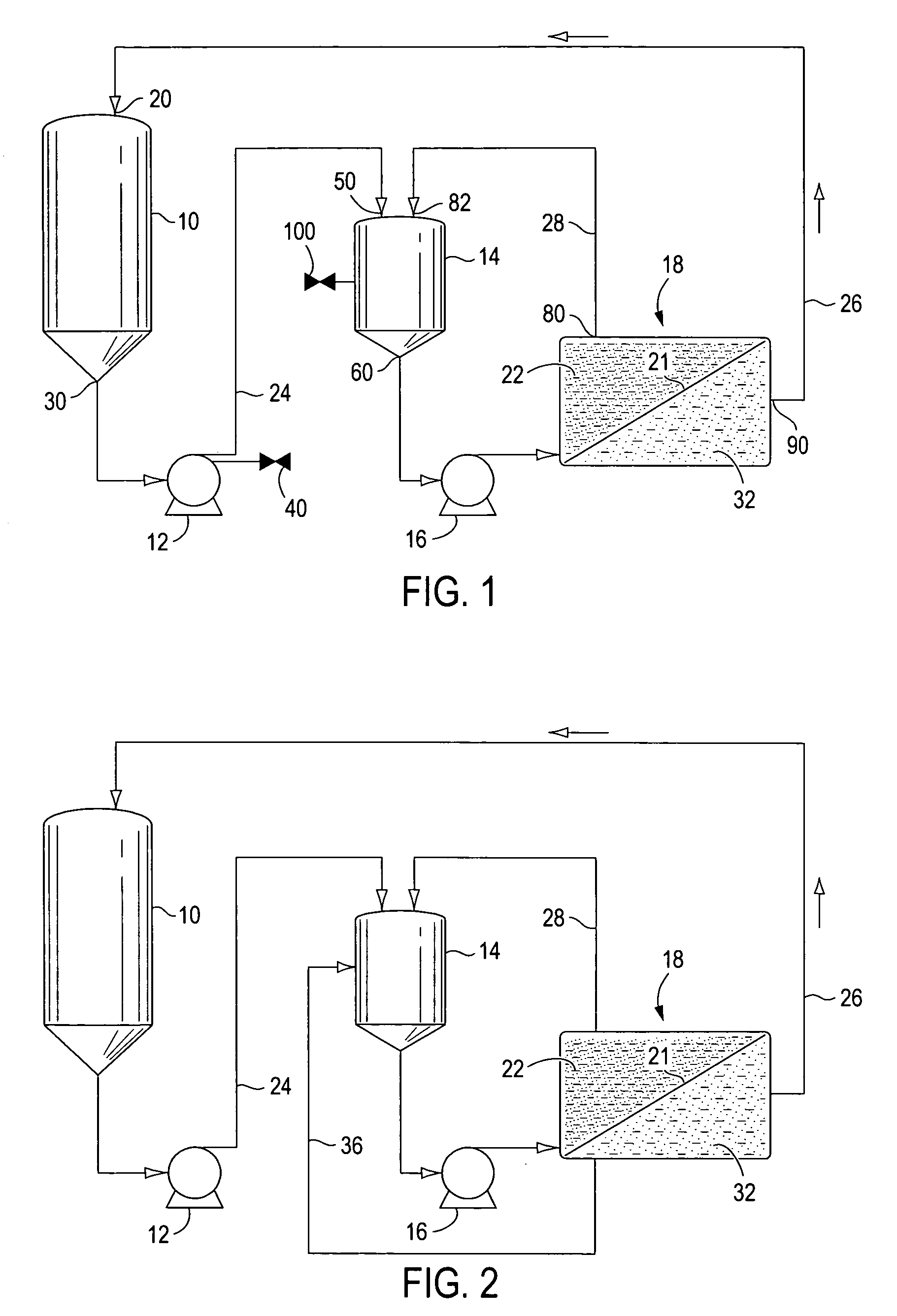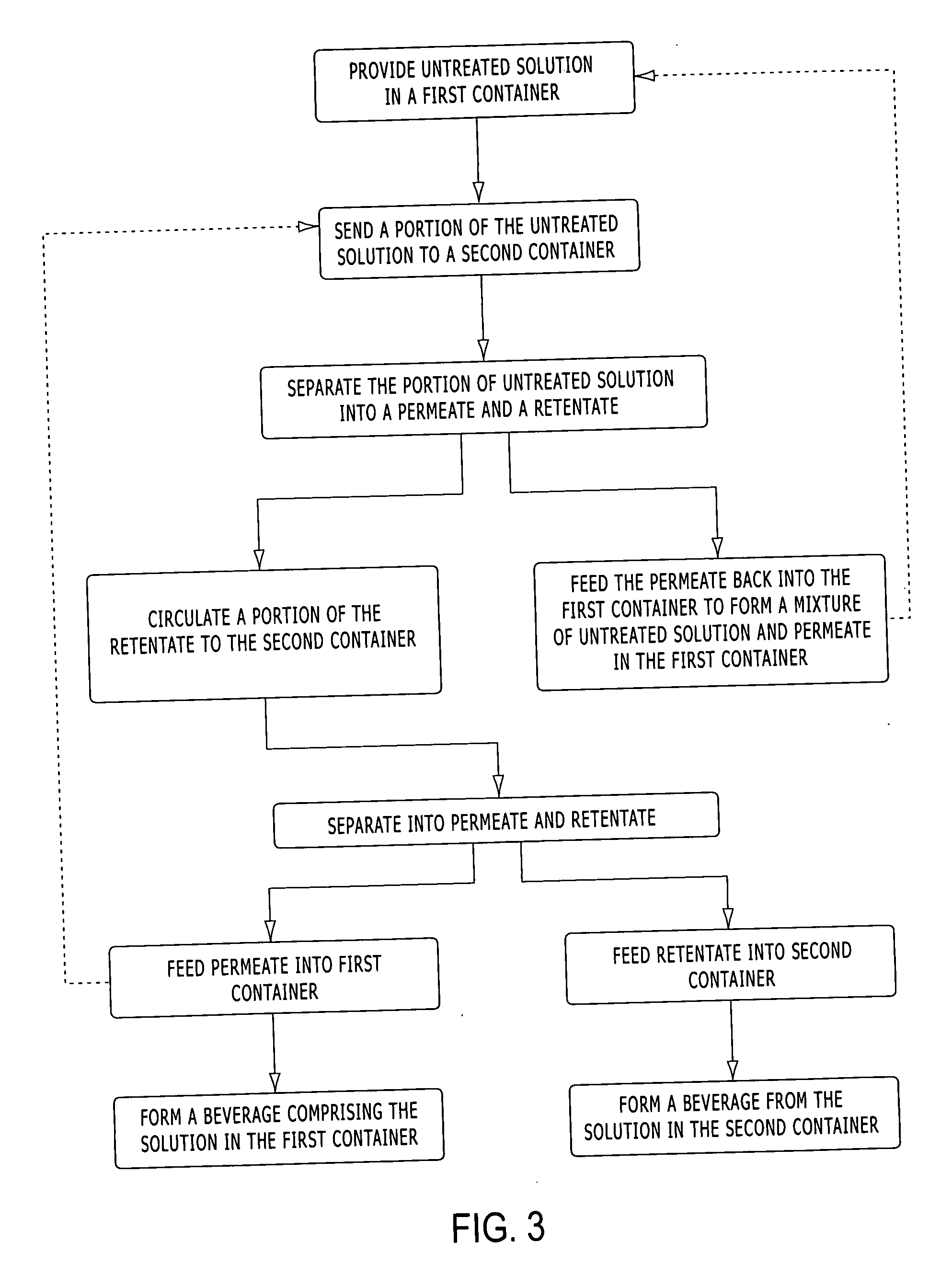Method of adjusting levels of dissolved compounds in beverages
- Summary
- Abstract
- Description
- Claims
- Application Information
AI Technical Summary
Benefits of technology
Problems solved by technology
Method used
Image
Examples
example 1
Carbohydrate Reduction in Wine
[0032] The original wine in a storage container is fed to a smaller feed tank to a nanofiltration or reverse osmosis filtration system. The permeate from the filtration system is sent back to the storage tank, diluting the carbohydrates and gradually reducing the content of carbohydrates in the wine in the storage container. Simultaneously, the retentate from the filtration system returns to the feed tank, increasing the concentration of carbohydrates in the feed tank.
[0033] The process is stopped when either the original wine storage tank has reached the desired reduction of carbohydrates, and / or the small feed tank has reached its desired or maximum concentration of carbohydrates.
example 2
Tartrate Reduction in Wine to Achieve Cold Stability
[0034] Dissolved tartrates in grape juice become super-saturated when juice becomes wine, due to tartrates lower solubility in alcohol. This super-saturation of tartrates must be reduced before bottling or the tartrates will precipitate in the bottle, making an unattractive sediment for consumers. Typically, wine solutions are chilled for weeks at near freezing temperatures to promote tartrate precipitation prior to bottling. It is energy expensive to maintain the cold temperatures for large volumes of wine while the tartrates precipitate out of solution and collect in the chilled storage tank.
[0035] It is possible to concentrate the dissolved tartrate level in wine to a higher concentration in super-saturation in order to initiate precipitation. Nanofiltration or reverse osmosis filtration may be used to concentrate the tartrate level to a higher concentration in supersaturation, but the permeate from this filtration process may...
example 3
Operation of Process in a Commercial Processing Plant
[0038] A storage tank capable of holding 100,000 gallons of wine is connected to a filtration system feed tank. The feed tank holds 95,000 gallons. A pump is used to transfer wine from the storage tank to the feed tank until the feed tank is full. The wine may be transferred directly from the storage tank to the feed tank, or the wine may be fed from the storage tank through the filtration system into the feed tank until the feed tank is full.
[0039] A second pump transfers wine from the feed tank through the filtration system, sending the retentate back to the feed tank, and the permeate back to the storage tank. In a continuous operation, the storage tank pump continues to transfer wine from the storage tank to the feed tank at the same rate as the permeate from the filtration system is transferring into the storage tank, maintaining approximately a constant volume in the storage tank.
[0040] In this example, the storage tank m...
PUM
 Login to View More
Login to View More Abstract
Description
Claims
Application Information
 Login to View More
Login to View More - Generate Ideas
- Intellectual Property
- Life Sciences
- Materials
- Tech Scout
- Unparalleled Data Quality
- Higher Quality Content
- 60% Fewer Hallucinations
Browse by: Latest US Patents, China's latest patents, Technical Efficacy Thesaurus, Application Domain, Technology Topic, Popular Technical Reports.
© 2025 PatSnap. All rights reserved.Legal|Privacy policy|Modern Slavery Act Transparency Statement|Sitemap|About US| Contact US: help@patsnap.com



